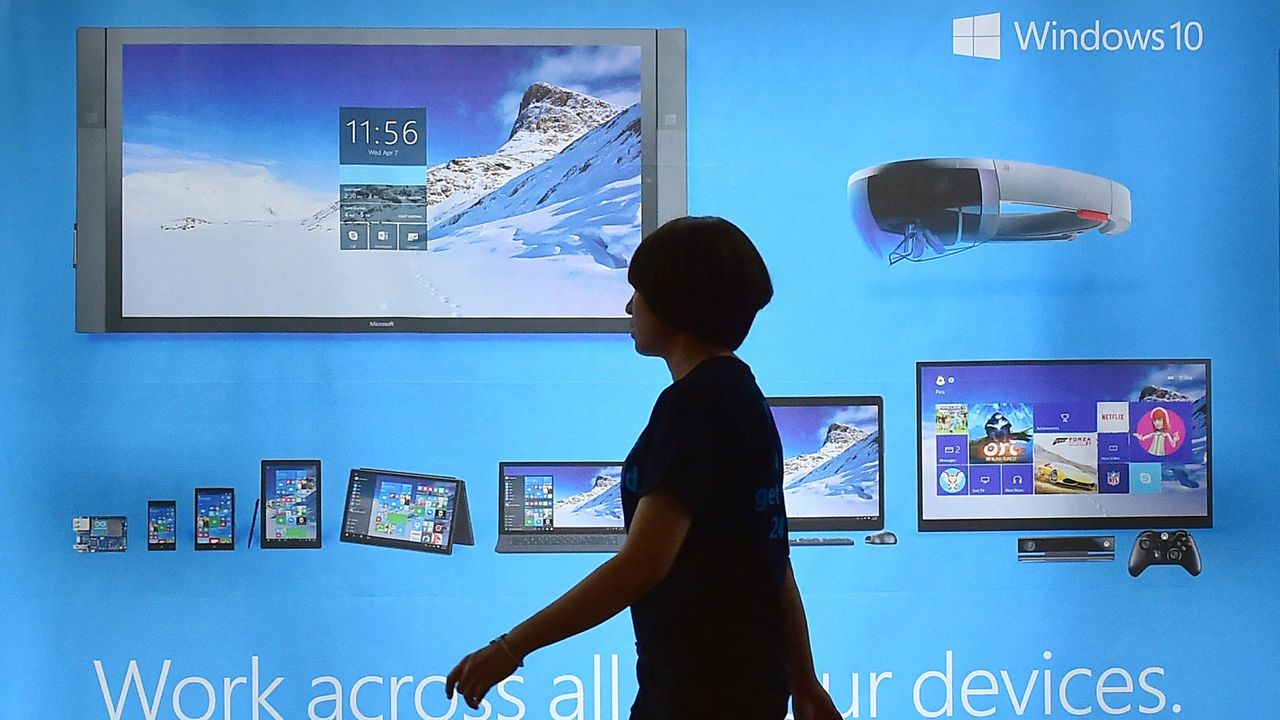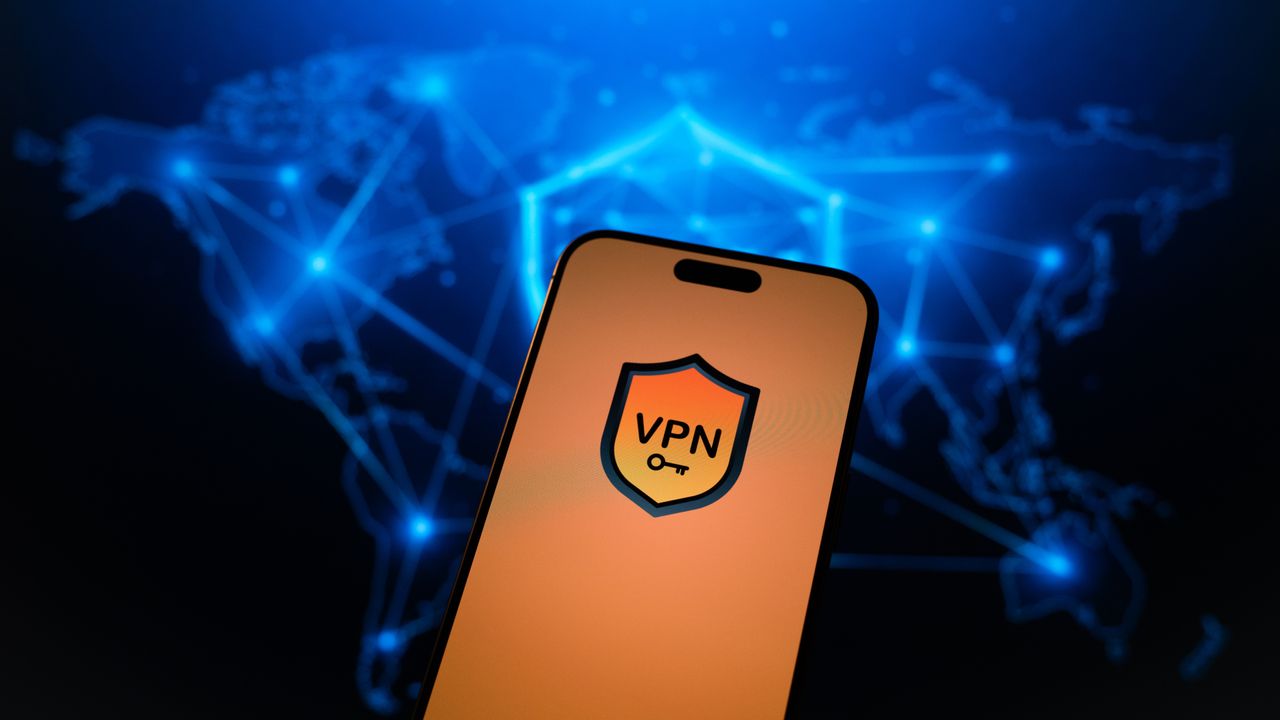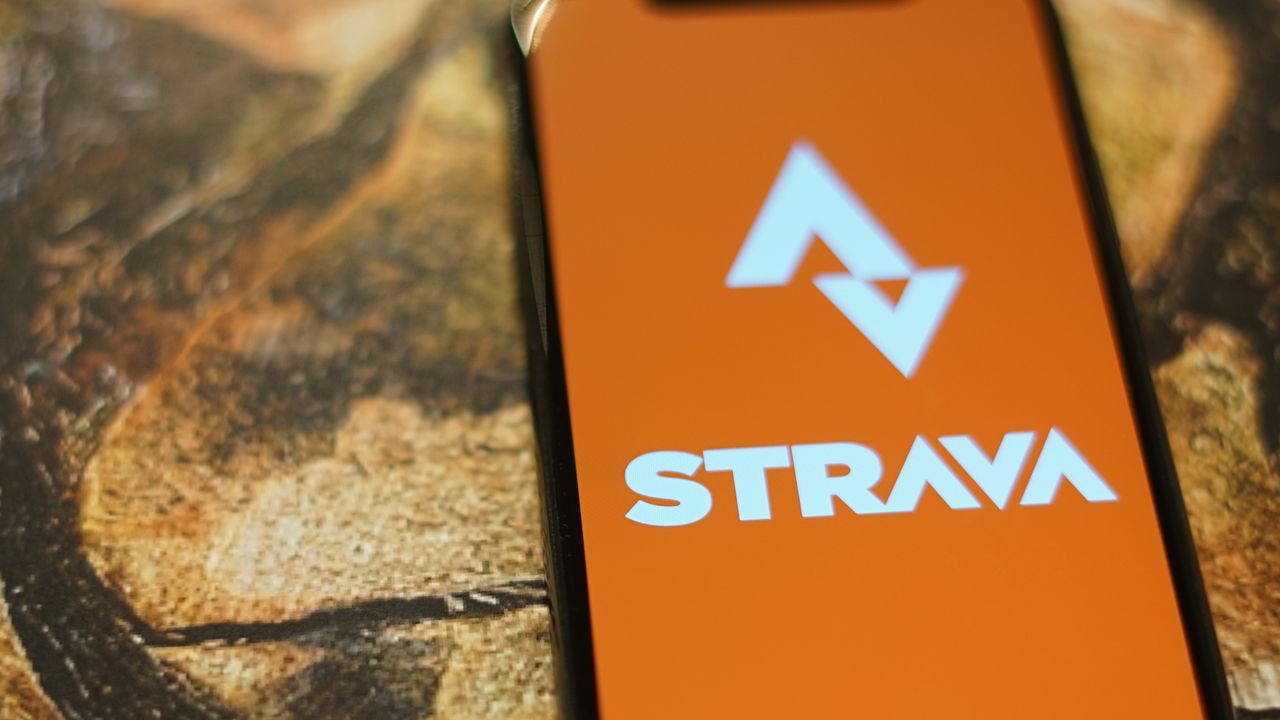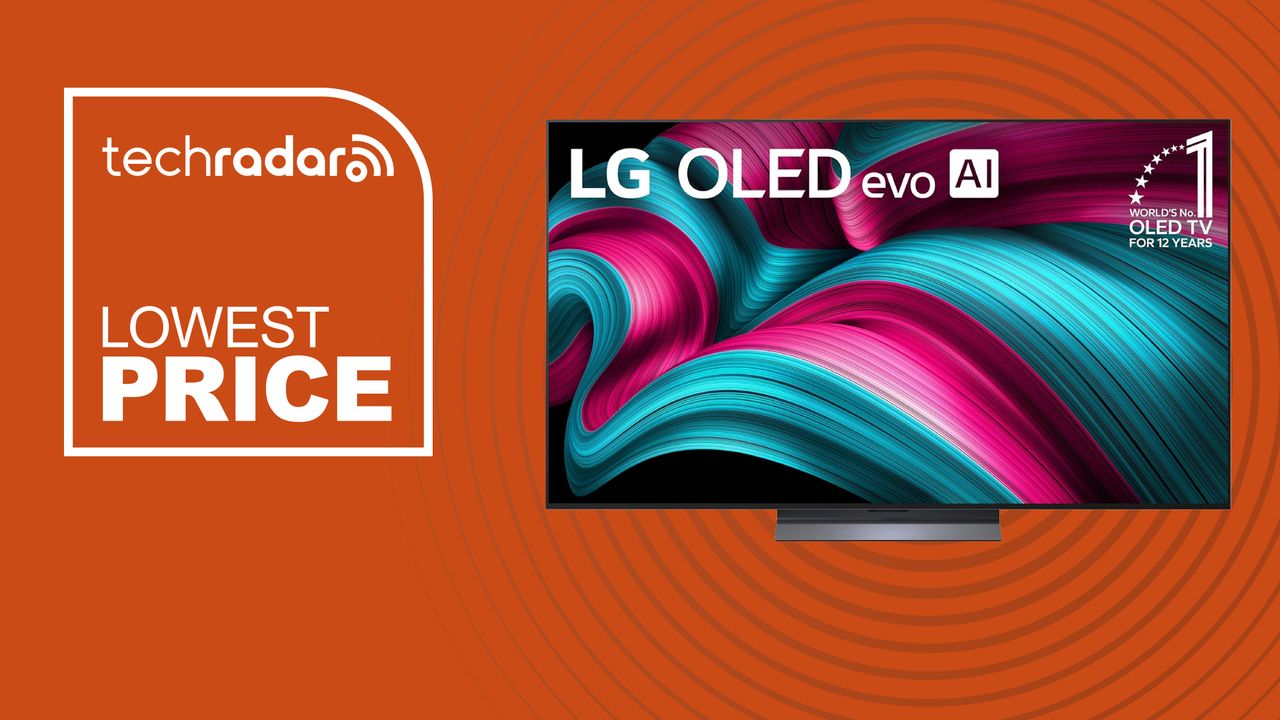
Goodbye, Windows 10 — how a decade of 'progress' eroded users' command over their own machines
As Windows 10 fades into obsolescence, the argument it leaves behind is more philosophical than technical.

As Windows 10 fades into obsolescence, the argument it leaves behind is more philosophical than technical.

OpenAI will purchase 10 gigawatts worth of AI accelerator hardware from semiconductor Broadcom.

There are a lot of people looking to upgrade to Windows 11 right now … and apparently a lot of them are having trouble doing so. Because one of the most popular methods for moving from Windows 10 to the new operating system—Microsoft’s official Media Creation Tool—has a debilitating bug in its latest release. Whoops! If you’re unaware, the Media Creation Tool is a super-simple way to download a small program from Microsoft and bake it onto a USB drive that can then be used to install a copy of Windows on a PC. It’s an excellent method for installing fresh and starting from scratch, especially if you need to do so for another computer, say, in aid of family tech support. The Media Creation Tool has been around in various flavors for years, and it’s periodically updated as a separate piece of software… and the latest update has broken it for some users on Windows 10. That’s according to Microsoft itself, who filed it as a bug on October 10th (that’s 11 days after the tool was updated). According to the official “Known Issues” page for Windows (spotted by Windows Latest ), Windows 10 machines on the 22H2 release are seeing the tool “close unexpectedly, displaying no error message.” The fact that this was an update to the tool that immediately preceded the self-imposed deadline that Microsoft set for a Windows 11 upgrade is unfortunate (or hilarious, depending on your point of view). Oh, and despite being nominally the “second half of 2022” release according to the name, 22H2 is, in fact, the latest full version of Windows 10. It’s the one that you need to be on if you want to be eligible for that extra year of security updates from Microsoft . It seems unlikely that this issue is affecting the majority of Windows 10 users who are downloading the Media Creation Tool, if only because it took more than a week for Microsoft to officially comment on the situation. And there are plenty of other ways to upgrade if that’s what you want to do, not least of which is to just borrow a Windows 11 machine, where the tool seems to be working fine. You could also just download the ISO and create a bootable flash drive the old-fashioned way. But yeah, it’s not a great look in a situation that was already looking pretty not-great. Since the problem has been documented on the Known Issues page, I imagine someone at Microsoft is scrambling to resolve it as you read these words.

Apple TV+ is now plain-old Apple TV, Apple told us yesterday. Confusing? Not for most. Indeed, Apple TV+’s dropping of the “+” was as inevitable as Max getting the “HBO” back. First, the news: In its announcement that the Brad Pitt blockbuster F1: The Movie will make its debut on Apple TV+ in December, Apple casually noted that as of now, Apple TV+ isn’t Apple TV+ anymore . “Apple TV+ is now simply Apple TV, with a vibrant new identity,” Apple’s press release reads. What’s the new identity, you ask? Aside from a new and multicolor Apple TV logo, that’s hard to say. Those of us who follow the streaming industry greeted the news with furrowed brows. So Apple TV the streaming service is now on Apple TV, the streaming box? Isn’t that kind of confusing? Yes, the Apple TV streaming player is officially known as “Apple TV 4K,” but still. Well, it’s details like the “+” and the “4K” that cause headaches when it comes to clear and consistent branding, and the truth is most folks haven’t bothered with the “plus” for a long time. Severance, The Studio, The Morning Show, Ted Lasso —those are all Apple TV shows, according to everyday streamers. Sometimes, simplicity and familiarity are best. Take HBO Max, which went through a three-year-old rebranding drama that saw the service renamed as “Max,” a change that was mainly driven by the now-unraveling alliance between the former WarnerMedia and Discovery. Warner Bros. Discovery likely spent a fortune trying to get the Max branding to stick, but most subscribers just kept calling it HBO Max. Finally, the entertainment giant stopped swimming against the tide and restored the old name . Same goes with Paramount, which yanked the “Showtime” branding from its Paramount+ streaming tiers back in June. Starting in 2022 with Paramount’s plan to blend Showtime content into its Paramount+ service, the streaming had a number of different “with Showtime” tiers, leading to confusion and some very ungainly streaming plan names. Ultimately, Paramount relented, ditching the “Showtime” branding for the streaming version of Paramount+ (there’s still a linear Paramount+ with Showtime channel). Now it’s just Paramount+ Essential and Paramount+ Premium, which (incidentally) both include Showtime shows. Again, it’s a change that only the suits and industry watchers cared about. So yes, Apple TV+ is now just Apple TV, although for most it’s always been Apple TV. But what about Apple TV —you know, the streaming box? Well, there’s an interesting theory making the rounds that a new—and renamed—Apple TV will clear up any lingering confusion. The Apple TV Max, maybe? Apple TV Pro? Or maybe a name that ditches the “TV” altogether, like the Apple Streamer or the Apple Hub (a smart home hub plus video streamer). It’s not clear exactly when a new Apple TV—or a new Apple Streaming Whatever—will arrive (it’s reportedly coming soonish, if not this week ), but when it does, the whole “Apple TV+ is now Apple TV” issue might become moot.

Apple CEO Tim Cook is in Shanghai, China to celebrate the upcoming launch of the iPhone Air in the country, and during his visit, he met with Pop Mart CEO Wang Ning and The Monsters creator Kasing Lung. On Chinese social network Weibo , Cook said that Lung demonstrated how he sketches his characters on his iPad Pro with an Apple Pencil . Lung is the designer behind the Labubu character that has become wildly popular worldwide. During the meeting, Lung gifted Cook a one-of-a-kind Labubu modeled after Cook. The Labubu features white fur, glasses, black jeans, a blue shirt, sneakers, and a tiny iPhone 17 . Cook, meanwhile, said that Labubu "now has her own new iPhone 17 Pro in Cosmic Orange," and Lung drew a picture of Cook meeting Labubu. Lung shared a selfie with Cook on Instagram , and also offered a closer look at Cook's unique "Tim Cook Labubu." View this post on Instagram A post shared by Kasing Lung (@kasinglung) While in China, Cook also stopped by the Apple Pudong retail location, met with the Lilith Games team behind AFK Journey, and visited Wang Feifei on the set of her new music video, which was filmed in a single shot using an iPhone 17 Pro. iPhone Air preorders are set to launch in China on October 17, with a launch to follow on October 22. The iPhone Air was delayed in China because Apple needed regulatory approval for an iPhone without a physical SIM. At 5.6mm, the iPhone Air is too thin for a physical SIM slot, and so it will be the first eSIM iPhone that Apple offers in China. Tag: Tim Cook This article, " Apple CEO Tim Cook Gifted Custom Labubu During China Visit " first appeared on MacRumors.com Discuss this article in our forums

With EV demand predicted to plummet, GM has rejiggered its production plans.

SimonMed Imaging suffered at the hands of Medusa, but has since been removed from Medusa's data leak site.

About a week after a complete internet shutdown that lasted 48 hours, Proton VPN recorded spikes in usage of +35,000% above baseline as Afghans look for ways to stay online.

As Strava's rift with Garmin deepens, it says its "top priority" is connectivity for users and all but confirms it'll back down.

There's a new Apple TV set-top box on the way that may or may not help this rebrand make sense.

Save over $1,000 on a 2025 HP laptop that comes bundled with a wireless mouse, SD card, Microsoft Office 365, and more. The post HP’s 2025 Intel N150 Laptop Bundle Is Back in Stock at Almost 80% Off as Amazon Looks to Extend Prime Day’s Hottest Deals appeared first on Kotaku .

One of the very best TVs you can buy, the LG C5, is still available for an exceptionally attractive price

Today, October 14th, officially marks the end of full support for Windows 10 , a whopping decade after Microsoft debuted the operating system. You’re probably aware of this already, as Microsoft has been begging, pleading, cajoling, and not-quite-demanding that Windows 10 users switch over to Windows 11 by upgrading to a new device or updating their operating system (if their hardware supports it). But if you haven’t done anything about it yet, you probably should. Here’s a quick summary of what you need to know and what to do about it. Your options for Windows 10 You don’t have to leave Windows 10 if you don’t want to. Hundreds of millions of PCs ( about half of them , in fact) won’t stop working today just because of a specific date on the calendar. This is not a Y2K situation. Even Microsoft itself has backtracked on the ultimatum, offering regular users “free” ways to extend security support for another year , albeit with some distasteful strings attached. (Many countries in Europe have strong-armed Microsoft into that extra year of security support for users with no need to jump through hoops. A cynical observer might ask why Microsoft can afford to give extended support without strings to residents of countries with more robust regulatory infrastructures but not to everyone else on the planet. Hey Microsoft, why can you afford to give extended support… yadda yadda?) Over the past few months, PCWorld has been covering the transition from Windows 10 to Windows 11, your options for upgrading or staying, or even moving to another platform entirely. This series of articles covers everything you need to know: Here are all your options for keeping your current laptop or desktop PC , including Linux. How to keep using Windows 10 and keep getting security updates . How to download a backup of Windows 10 installation media (ISO) . How to update or upgrade to Windows 11 . Here’s how to get a Windows 11 license for cheap , or possibly free. Here are things that Windows 11 does better than Windows 10 . Here’s how to get started using Windows 11’s new features . Here are easy tweaks that can boost Windows 11’s performance . Why now? Why Windows 11? No piece of software lasts forever. Indeed, the preceding operating system Windows 8 was supported from 2012 to 2023, by at least some measures, so a 10-year stretch is not unprecedented. Meanwhile, Windows 11 has been available since 2021. But I think there are several reasons why Microsoft is seeing such a strong pushback this time around. One, there’s nothing fundamentally wrong with Windows 10 that really necessitates an upgrade for most users. Windows 11’s initial teething troubles are done, but many users still aren’t happy with its less flexible setup, to say nothing of its more intense load of advertising integration with Microsoft services. Speaking as a life-long Windows user, I’m still annoyed that four years after launch I need a third-party tool to get my taskbar on the top of my monitor, or even open widget links in the browser of my choice. Windows 11 is, in a word, annoying. And Windows 11 doesn’t offer much of anything to most people that isn’t covered by Windows 10. Arguably, a newer suite of Copilot tools is neat if you’ve hopped on the generative “AI” train, but Copilot hooks into services like ChatGPT that work fine in a browser and don’t need anything fancy in terms of local hardware— not even those NPUs that are a headline feature of new laptops and processors. The most visible feature in “Copilot+ PCs” is Windows Recall , a tool that’s so potentially devastating to the privacy and security of most users that my colleague Mark Hachman recommends you turn it off immediately . A different digital world But I think the biggest problem Microsoft is facing during this don’t-call-it-forced transition is that we’re in a much different digital landscape than we were in 2015. An entire generation of young people sees their phone—not their laptop or their desktop—as their primary digital device. Alternatives to Windows are more visible and available than ever, with plenty of users adopting macOS for better integration with iPhones and plenty of kids accustomed to Google’s Chromebooks through deep penetration in the education market in many countries. Even Linux is finally having a moment in the spotlight, with millions of users now adopting it as a gaming platform via the Steam Deck , even if they’re not fully aware that it’s Linux-powered. This is, in short, a really bad time for Microsoft to try and force tons and tons of users onto a new operating system that they generally don’t need and didn’t ask for. The backtracking on another year (or two) of security updates, previously gated behind premium support and aimed only at corporate customers, indicates to me that at least someone in Redmond is sounding the alarm.

Seafood gets a bad rap when it comes to plastic pollution, but scientists say we're overlooking the bigger picture—and skewed media coverage isn't helping.

Kai Nicol-Schwarz / Sifted : London-based Dexory, which builds autonomous warehouse robots, raised a $165M Series C in equity and debt, after raising a $80M Series B in 2024 — The London-based company will strengthen its commercial teams and expand across multiple international markets

At a Glance Expert's Rating Pros Unlimited simultaneous connections Multiple independent no-log audits Lots of server locations Good app support Cons Monthly membership is a bit pricey Free trial only available on mobile devices Our Verdict IPVanish provides unlimited device connections, wide app support, and a robust server network. While the long term plans are affordable, the monthly plan is a bit steep. Still, it’s a solid VPN with fast speeds and good privacy promises. Price When Reviewed This value will show the geolocated pricing text for product undefined Best Pricing Today Retailer Price IPVanish $52.56 View Deal Price comparison from over 24,000 stores worldwide Product Price Price comparison from Backmarket Best Prices Today: IPVanish VPN Retailer Price IPVanish $52.56 View Deal Price comparison from over 24,000 stores worldwide Product Price Price comparison from Backmarket IPVanish in brief: P2P allowed: Yes Unlimited device connections: Yes Business location: United States Number of servers: 3,100+ Number of country locations: 148 Cost: $12.99 per month, $33.99 for 1-year, or $52.56 for a 2-year subscription Very few VPN services actually own their own server networks and that’s where IPVanish stands out. Instead of relying on commercial server farms, U.S.-based IPVanish prides itself on running its own hardware and servers. It’s not just this that helps it stand out though; IPVanish has a lot going for it and continues to improve upon itself with each passing year. Recently, IPVanish has made a big push to add features and services that help it compete with the very best in the VPN market. In my latest testing, I took IPVanish for another spin to see if its worth your money. Read on to learn more, then see our roundup of the best VPN services for comparison. What are IPVanish’s features and services? What’s new with IPVanish? Since my last review, IPVanish has been busy implementing sweeping upgrades across nearly every facet of its service. It has added 700 new servers and begun transitioning many of its servers to RAM-only servers. Currently, it has switched 500 of its servers—roughly one-sixth—to RAM-only and plans to continue this in the future. Additionally, IPVanish has expanded its membership options by adding an “Advanced” tier with access to 1TB of cloud storage and its latest secure browser. IPVanish has also added double-hop (or multi-hop) connections for all members to its Windows, macOS, iOS, and Android apps. The service has also gone through an additional independent no-log audit in February 2025 and has begun quarterly transparency reports. IPVanish hands-on IPVanish’s homescreen is easy to parse and provides valuable connection information. Sam Singleton At first blush, IPVanish has a clean, if rather dark interface—dark mode is enabled by default. The initial home screen you’re presented with is a split-screen dashboard showing a world map with server location pins to the right and connection info to the left. The connection info box displays basic information about your connection including the server location, IP address, connection status, protocol used, and data up and down. While it may not have any fancy design flair, the interface is intuitive and easy to parse. IPVanish continues to increase its already impressive global server spread year-by-year. Sam Singleton There is a toolbar on the left of the application’s interface with options for Locations, Secure Browser, Link Checker, Settings, Info, and Account. Under the Locations tab, you’re able to access more detailed information about each server including its ping, load (amount of server utilization from current user connections), and number of servers available in that location. It also has a helpful filtering mechanism that allows you to find the servers with the least ping or load. For those who want the optimum connection this is great info to have and I wish more VPNs would have the courage to display it. IPVanish recently upgraded its network to now include over 3,100 servers all over the world to choose from on IPVanish—nearly a 30 percent increase from last year. It has added new server locations as well and the company has begun the process of switching its entire network to RAM-only servers. RAM-only servers enhance user privacy and security by erasing all data with each server reboot meaning there is no persistent data for malicious actors to retrieve. In fact, IPVanish has continued to make great strides in recent years to update and optimize its services. From rolling out apps for more platforms to adding features such as a secure browser and double-hop; the service is obviously working hard to not only keep up with the rest of the market, but innovate as well. Other notable improvements include broader kill-switch and split-tunneling support for all major platforms. Split tunneling is a useful feature that allows you to pick and choose which apps you wish to run through the encrypted VPN connection and which to exclude. This can allow you to optimize app connections for both speed (outside the VPN) and privacy (inside the VPN). IPVanish also rolled out a browser extension for Chrome, Edge, Firefox, Opera, Brave, and Vivaldi in the last year—something that was sorely needed. The VPN service now comes with the ability to establish double-hop (also known as multi-hop) connections. This allows you greater privacy by routing your connection through more than one VPN server thereby increasing obfuscation of your home IP address. While more and more VPNs are offering this feature, not many allow you to pick and choose your entry and exit servers like IPVanish does. This flexibility is really nice to have, and I must admit they went above and beyond what I was expecting when I recommended that they add this feature in my last review. IPVanish does come with an antivirus program called VIPRE which will block malware and other threats on your computer. While this is helpful, I personally recommend that you elect for standalone antivirus software instead as it will provide more comprehensive security and protection. IPVanish is obviously working hard to not only keep up with the rest of the market, but innovate as well. IPVanish now comes with a unique Secure Browser feature. Sam Singleton The recent release of IPVanish’s Secure Browser feature struck me a bit by surprise. Not that I don’t like it—the idea is actually really cool—I just didn’t expect that this type of thing would be produced by a VPN company. The Secure Browser runs a browser in a sandbox environment in the cloud, enabling users to interact via a video feed. The benefit here is that it stops viruses, digital fingerprinting, and other forms of snooping as no data reaches your device. IPVanish states that all activity is deleted from its servers as soon as you close the session. While the latest successful independent audit would seemingly verify this claim, there is nothing that I could find specific in the audit that distinguishes the Secure Browser data from that of the rest of the VPN’s user data; so take from that what you will. IPVanish is available Windows, macOS, iOS, Android, Linux, Amazon Fire TV, Apple TV, certain routers, and most major browsers. How much does IPVanish cost? IPVanish offers two membership tiers, Essential and Advanced, in monthly, 1-year, or 2-year plans. The month-to-month rate for the Essential tier is $12.99 per month and the Advanced Tier is $14.99 per month. This is undeniably on the high side and comparable to ExpressVPN and NordVPN , two of our favorite services here at PCWorld. Considering all of the extra features you get with these competitor services, it seems hard to justify paying for IPVanish based on its monthly rate. The 1-year rate is a much more reasonable $39.99 ($2.79 per month) for Essential and $53.88 ($4.49 per month) for Advanced. It will then renew at $89.99 per year after that. The 2-year plan will run you an even cheaper $52.56 ($2.19 per month) for Essential and $78.96 ($3.29 per month) for Advanced. After the initial term for either the 1-year or 2-year plans, it will renew at $89.99 per year for Essential or $109.99 per year for Advanced. Thankfully, the prices for these longer-term plans are much more reasonable and end up being cheaper than many competitors. For Android and iOS users, IPVanish offers a 7-day free trial. This is unfortunately not available for Windows users. However, it does offer a 30-day money back guarantee for those who opt for the yearly or 2-year plans no matter your operating system. IPVanish accepts payments with credit card, PayPal, and Google Pay. How is IPVanish’s performance? In the past, IPVanish connections have been pretty fast, so how do they hold up in speed tests now? Pretty well, actually. Comparing speeds across different countries’ VPN server connections all over the world, IPVanish scored an impressive average of 60 percent of the base download speed and 58 percent of the base upload speed. That might not make it the speed champ , but it still puts it firmly in the top 10 speediest VPNs I’ve tested. Those relatively good download speeds should be plenty fast enough to stream all of the high-resolution video or do all of your gaming across most country connections. Please note, however, that this is a single experience on a limited number of machines, and your experience may vary depending upon your own situation. As for streaming, IPVanish successfully unblocked most of the streaming services that I tested including Netflix, Disney+, HBO Max, and Amazon Prime. While in the past I found blocking issues with certain IPVanish servers that is seemingly no longer the case and streaming should work just fine with all connections. Overall, it’s a good VPN for streaming, but if it’s your main use case for a VPN then you may consider any of the other options on my list of best VPNs for Netflix . How is IPVanish’s security and privacy? While using its service, everything is encrypted with AES 256-bit encryption and the Windows client comes with IPv6 and DNS leak protection. My testing verified this to be true with no DNS or WebRTC leaks to be found anywhere. Sam Singleton IPVanish supports a number of protocols such as WireGuard, IKEv2, and OpenVPN (UDP and TCP). It offers the additional option to customize the port options for OpenVPN connections allowing you to further tweak and optimize your connection setup. Currently, IPVanish does not have post-quantum encryption support for any protocols—something that other top VPNs are implementing. This isn’t a deal-breaker by any means, but it would be nice to have. Being based in the U.S., IPVanish could potentially lead to privacy problems as certain domestic laws require VPN companies to log and store client information in the event that law enforcement needs it. But IPVanish promises to keep your data totally private by not logging or sharing client information at all. IPVanish’s privacy policy is transparent and easy to understand. IPVanish This is clearly stated in the company’s no-logs policy which has now been validated via independent audit multiple times. The latest audit was conducted in February 2025 by Schellman Compliance, LLC. and confirmed the claims that IPVanish does not keep logs of client data whatsoever. These audits go a long way toward establishing and maintaining user trust. So, despite the U.S.-based operations, no-logs means there is nothing for IPVanish to provide the government even if requested. Is IPVanish worth it? IPVanish is a very appealing VPN based in the United States. The service is bolstered by solid overall speeds and a respectable global server network. The desktop app is easy enough to use and recent updates have made it even better. Plus, another third-party security audit is a reassuring sign that the service is committed to user privacy and willing to prove it. The monthly pricing is admittedly expensive for what you get, but at just a little over $30 for a yearly subscription the longer-term pricing becomes hard to beat. IPVanish has solid speeds, a large server network, and nice extra features, but some competitors may edge it out in one (or more) of these categories. Still, while many people might seek out other VPN providers with more name recognition and larger marketing budgets, IPVanish shouldn’t be overlooked. It already does the basics well and at the rate it’s adding new features, IPVanish is becoming a force to be reckoned with. Editor’s note : Because online services are often iterative, gaining new features and performance improvements over time, this review is subject to change in order to accurately reflect the current state of the service. Any changes to text or our final review verdict will be noted at the top of this article.